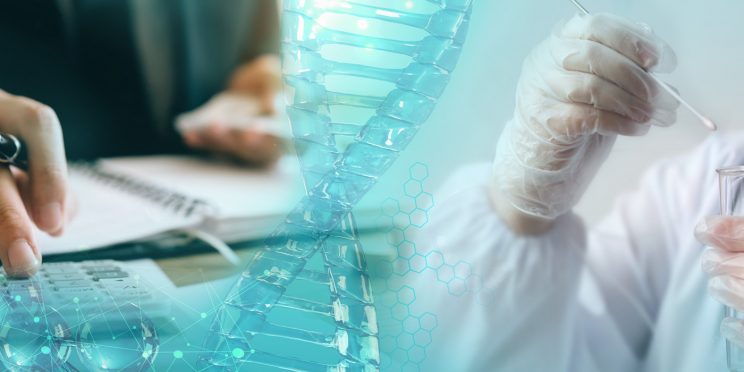Overview
This event originally occurred on September 19, 2024
Duration: 2 hours
Welcome to the 2024 National Institute of Justice (NIJ) Forensic Science Graduate Research Symposium hosted by the Forensic Technology Center of Excellence (FTCOE)!
In 2023, the FTCOE also hosted the NIJ Forensic Science Graduate Research Symposium during National Forensic Science Week. This symposium provides a platform for undergraduate students, graduate students, and early career scientists to present their research to a broad audience. The FTCOE is grateful for all the universities, faculty, and students who took the time to prepare oral presentations for this year’s event. The FTCOE recognizes your hard work and is convening this virtual event to celebrate and learn from your research.
This virtual symposium was held on September 19, 2024 and included two, one-hour sessions, each featuring three, 15-minute oral presentations followed by a live question and answer session.
View the archived event to learn more about research being conducted by a diverse group of students across the United States and the globe!
Featured Topics
A Computational Method for Genetic Identification from Low-Coverage Sequencing Data
A Computational Method for Genetic Identification from Low-Coverage Sequencing Data
Authors
Remy Nguyen*, Joshua D. Kapp, Samuel Sacco, Ciara Wanket, Richard E. Green | University of California, Santa Cruz
Steven P. Myers | California Department of Justice Jan Bashinski DNA Laboratory
Abstract
Recent developments in next-generation sequencing technologies have enabled the recovery of genetic data from minute, contaminated, or heavily degraded samples, removing roadblocks to many forensic investigations. Current analysis methods often rely on single nucleotide polymorphisms (SNPs) or a panel of hypervariable short tandem repeat (STR) markers. However, these can fail when accurate genotype calls at comparison sites used for DNA are unobtainable from trace amounts of genetic material. This is especially true for difficult, but forensically relevant, DNA samples, such as bone fragments or single rootless hairs. The recently published computational procedure, IBDGem, addresses this challenge by leveraging low-coverage sequence data from an unknown forensic sample and a known genotype profile to detect genomic regions of identity-by-descent. At less than one-fold genome coverage, this method reliably detects segments of relatedness and can make high-confidence identity detections with as little as 0.01-fold genome coverage. Here, the researchers also describe recent improvements to the program’s utility, as well as characterize various parameters that affect its robustness.
Subadult Sex Estimation Method Using Pelvic Metrics and Geometric Morphometrics
Subadult Sex Estimation Method Using Pelvic Metrics and Geometric Morphometrics
Authors
Leah Auchter*, Kyra E. Stull | University of Nevada, Reno
Heather M. Garvin | Des Moines University
Abstract
The forensic anthropological field has posited that there should be a better understanding of the biological foundations that enable biological profile estimations, including sex estimation, of skeletal human remains. Adult sex estimation methods consistently yield high classification accuracies while subadult sex estimation methods have been less successful primarily because of a lack of large skeletal samples representing all of ontogeny. A subset of 364 individuals aged between 8 and 20 years from the United States subset of the Subadult Virtual Anthropology Database (SVAD) were included in this study. A total of 34 pelvic landmarks were recorded for each individual; 16 landmarks were used to calculate 11 interlandmark distances (ILD). Seventeen landmarks were used in the geometric morphometric (GM) analyses. A General Procrustes Alignment (GPA) and Principal Components Analysis (PCA) was performed, and a multivariate analysis of variance (MANOVA) was performed on all the Principal Components (PCs) as a multivariate test of significant shape differences between males and females. Linear discriminant function analyses (LDA) were used on a training sample for both the ILDs and on the PC scores from the GM analysis to generate sex estimation models; a test set was used to evaluate the models (n = 91). The LDA using 11 ILDs and the hold-out sample demonstrated an overall classification accuracy of 97.78% while the GM method demonstrated a 96.55% overall classification accuracy. Results of this study suggest that both metric analyses and GM analyses can correctly estimate sex of individuals with fusing or completely fused innominates with high accuracies.
Development of a Matrix-Matched Standard for Toxic Exposure of Hair
Development of a Matrix-Matched Standard for Toxic Exposure of Hair
Authors
Kaitlyn Bonilla*, Ashley Fox, Chloe Phillips, Matthieu Baudelet | University of Central Florida
Abstract
In forensic investigations, the analysis of hair provides a detailed distribution profile for toxic exposure. In comparison to other common biological matrices, hair can offer great advantages as it provides a historical context with growth rate and has a longer detection window of analytes. Laser-based analysis allows for direct sampling of hair with minimal sample destruction. Chemical analysis of human hair poses analytical challenges due to a lack of matrix-matched standards. For quantification of potential toxins, it is imperative for a calibration material to represent the chemical and physical properties of its matrix, allowing for the correction of sample matrix effects. The researchers are developing a method for a new reference material using keratin as a matrix-matched calibration standard. This study employs the analysis of toxic metals for their potential exposure in human hair using a laser-based approach. Laser Ablation - Inductively Coupled Plasma - Mass Spectrometry (LA-ICP-MS) is a highly sensitive technique providing longitudinal analysis of a single hair at the micron scale. The material is synthesized from extracted human hair keratin, purified, spiked, and cross-linked to obtain a thin film. The samples were doped with toxic metals of interest to use as a calibration standard for elemental analysis; the characterization of its chemical and physical properties was studied. This new reference standard for human hair will provide an opportunity for single hair analysis, providing a quantitative, chronological record of potential exposure.
Investigating Physical Activity from Fingerprint Lipids Using Machine Learning
Investigating Physical Activity from Fingerprint Lipids Using Machine Learning
Authors
Daphne R. Patten*, Trevor T. Forsman, Young Jin Lee | Iowa State University
Abstract
A key focus of many criminal investigations is gathering information about suspects' lifestyles. Such information is extremely useful for directing investigations and saving valuable time. One lifestyle detail not currently assessed is a suspect’s physical activity (PA), primarily because no methodology exists to determine an individual’s PA based on empirical evidence. Yet, PA can provide insights into the occupations and habits of perpetrators. Previously, this research group has demonstrated that inactive people have higher amounts of saturated triacylglycerols in their fingerprints compared to active individuals. To validate and advance this initial result, the researchers have performed a large-scale study to find the correlation between fingerprint lipids and an individual’s PA with machine learning. For this study, participants (n = 65) completed a physical activity questionnaire and deposited their fingerprints onto glass microscope slides. The fingerprint samples were analyzed directly from the glass slides using matrix-assisted laser desorption/ionization mass spectrometry (MALDI-MS). Once the data was collected, an ensemble model was trained on 70% of the participants using MATLAB®, while the rest were used to test the model. The data was then rerandomized ten times to accurately estimate how the machine learning model processes the data. The ensemble model was trained to look at 31 triacylglycerol lipids, biological sex, and age of the individual and performed with an accuracy of 90.9% (±2.5) for the training sets and 90.5% (±6.0) for the testing sets. Future research will look at other lipid classes, such as wax esters, to further improve the machine learning modeling of PA.
Optimized Demineralization Method Using Bone Slices for Improved DNA Recovery
Optimized Demineralization Method Using Bone Slices for Improved DNA Recovery
Authors
Ciara Rhodes*, Reilly Price, Celeste Willetts, Tal Simmons, Sarah Seashols-Williams | Virginia Commonwealth University
Laura Gaydosh Combs | University of New Haven
Abstract
Current processing techniques for harvesting DNA from osseous elements are destructive to potentially limited samples, and success rates vary widely. In this work, the researchers have developed and optimized an alternative front-end processing method using bovine cortical bone as a model for human skeletal remains. After sample preparation, complete demineralization of small cortical bone fragments was performed, and samples were manually sliced with a razor blade before isolation with silica-based DNA extraction chemistry. Bovine mitochondrial DNA (mtDNA) quantification data and short tandem repeat (STR) profile quality were assessed for both powdered bone samples and demineralized slices. Bovine profiles generated from demineralized slices yielded a higher average percentage of alleles detected (p < 0.05) and demonstrated greater retention of larger STR loci compared to pulverized samples. Therefore, using demineralized slices resulted in more complete, balanced STR profiles, higher peak heights, and less degradation than powdered samples. Using 19th-century human cortical skeletal samples, the researchers assessed the efficacy of the developed methodology to investigate the concordance of genetic markers through traditional and emerging genotyping applications to maximize the recovery of degraded DNA for human identification. Total endogenous DNA yields and degradation indices of powdered samples and demineralized slices were evaluated. The average total DNA yields for pulverized and demineralized slices were 0.1391 ng and 0.9043 ng, respectively. The average DNA index (DI) for pulverized samples could not be calculated due to failed large autosomal target amplification. Demineralized slices ultimately resulted in greater recovery of amplifiable DNA compared to traditional homogenization methods of skeletal remains for DNA analysis.
Generalizing Audio Deepfake Detection for Forensics and Security
Generalizing Audio Deepfake Detection for Forensics and Security
Authors
You (Neil) Zhang*, Yongyi Zang, Ge Zhu, Kyungbok Lee, Mojtaba Heydari, Zhiyao Duan | University of Rochester
Siwen Ding | New York University
Fei Jiang | Tencent Technology
Jiatong Shi | Carnegie Mellon University
Xinhui Chen | Lehigh University
Ryuichi Yamamoto, Tomoki Toda | Nagoya University
Abstract
The rapid advancement of AI-driven audio generation has made distinguishing between genuine and fake audio increasingly challenging, enabling the misuse of deepfakes in criminal activities. This underscores the urgent need for robust audio deepfake detection (ADD) systems that can effectively filter out such threats. For reliable detection, ADD systems must be robust against emerging and unknown deepfake techniques, provide justifiable evidence for their decisions, and integrate seamlessly with other detection tools. In this presentation, the presenter introduces research on a novel training strategy known as multicenter one-class learning, which addresses the distribution mismatch between training and evaluation data. The researchers propose a one-class learning approach that compacts the distribution of bona fide speech representations while pushing away deepfake attacks, thereby enhancing detection performance. This framework also encourages the separation of deepfakes in the embedding space and clusters real recordings from diverse settings around multiple centers. This results in ADD systems that surpass existing models in detecting deepfakes generated from novel methods.
Additionally, the researchers discuss ongoing work in extending speech deepfake detection to singing voice deepfake detection and further generalizing from audio (uni-modal) to audio-visual (multi-modal) detection to tackle video deepfakes. Another planned initiative involves audio watermarking, a proactive steganography technique that embeds descriptions of deepfake generation algorithms within the audio, allowing authorized entities to accurately trace the origin of fraudulent speech, even in the face of novel deepfakes.
Check out last year's events!
- 2023 National Forensic Science Week
- 2023 National Forensic Science Week Murder Mystery Event
- 2023 NIJ Forensic Science Graduate Research Symposium and Poster Session
- 2023 National Forensic Science Week Interview Montage
- 2023 National Forensic Science Week Teacher How-To Guides
- 2023 National Forensic Science Week Puzzles
- 2023 National Forensic Science Week Fingerprint Game & Activity
- 2023 National Forensic Science Week Spot the Differences
Funding for this Forensic Technology Center of Excellence event has been provided by the National Institute of Justice, Office of Justice Programs, U.S. Department of Justice.
The opinions, findings, and conclusions or recommendations expressed in this event are those of the presenter(s) and do not necessarily reflect those of the U.S. Department of Justice.
Contact us at ForensicCOE@rti.org with any questions and subscribe to our newsletter for notifications.




